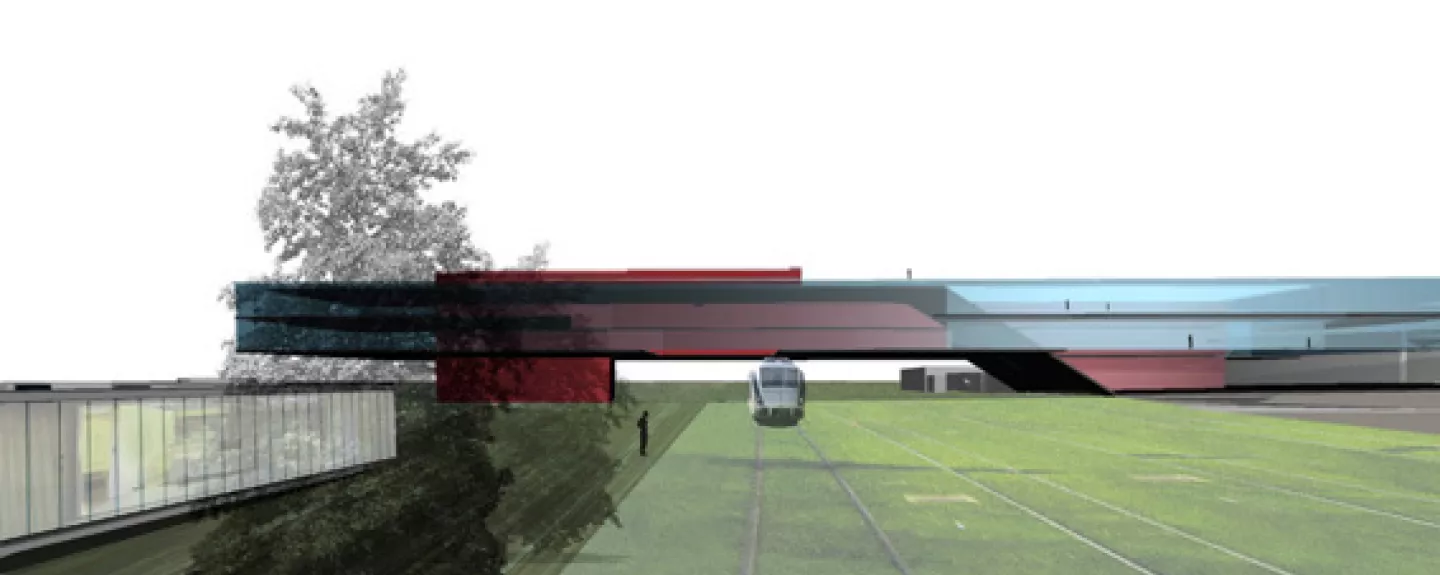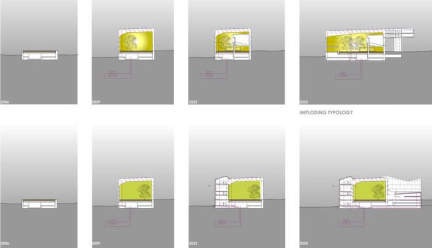Project:
Railtown City

About
-
The “Railway Bridge” is the urban prosthesis. Its aim is to restore and improve the existing dysfunctional connectivity, allowing the combination and overlapping of several activities, both permanent and temporary. It offers a compact programmatic menu, by providing a broad menu of uses in areas such as transport, commerce and culture. The “Railway dwellings”: this residential tissue is an elastic prefab system, which is organized in clusters. It performs like a sponge with its porosity and density varying according to the climate. Every prefab unit can easily be stored, fixed or refurnished according to the stock or season, and if some residents own the units, they can freely move out with them to somewhere along the railway!
-
"Rainltown City" reflects on the railway station as the infrastructural hub and motor for strengthening the city centre and starting off the development of Strandsonen. The proposal is to separate these two tasks into two distinct urban development strategies. A multifuctional bridge is proposed for the site, closest to the railway station. The multifunctional rail-bridge ("XL balcony") creates a physical and programmatic link between the city and the future Strandsonen development. It provides access across, under, and over the railway tracks. The rail-bridge-complex can become a magnet, capable of generating urban life in the city centre.
Also, the multifunctional programming of the building complex may strenghten the city centre in competition with the shopping centres in the periphery. By stitching together spaces for a series of new public programmes, this mega-structure strengthens the role of the station area as an important and the region. The rest hub for the city of the competition area, on the other hand, becomes a display for experimental housing focusing on low-energy consumption both in production and use phases.
The rail-town housing makes use of the railway tracks as a way to structure future development. There is a clear functional division between public and commercial rail-bridge and the "rail-town" housing.
By introducing a large-scale building, "Railtown City" instigates an important discussion of the role of the train station area as a motor in the urban development of potential regional importance.The jury values the project's strategy of inserting several key architectural elements, rather than as drawing up whole new city for Strandsonen, a so many competition entries have done. Nevertheless, the size of this architectural element is also its weakness, as it tries to "solve everything" inside the volume and risks becoming a "satellite" project unable to anchor well into neither the city nor the Mjøsa waterfront. As an idea in itself, the great flexibility of the housing project is interesting, but it does not show a convincing urban infrastructure for this spesific space.
-
Gorka Markuerkiaga (ES)
Nicolás Markuerkiaga (ES)
Cristian Suau (ES)
Carmelo Zappulla (IT)
architects
Alberto Teixidó (CL)
architect

